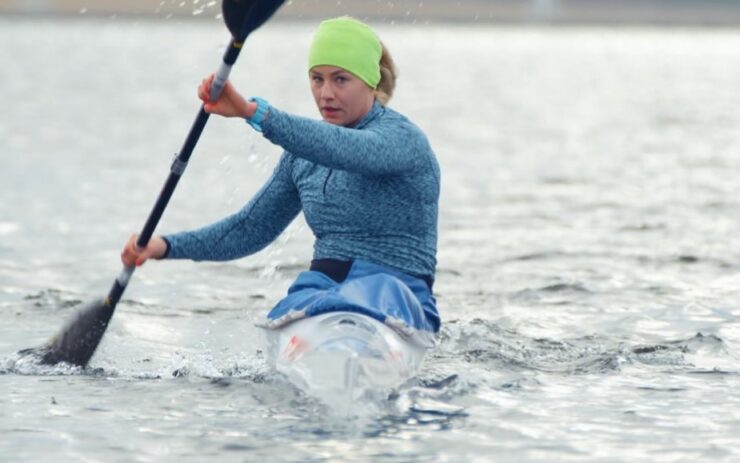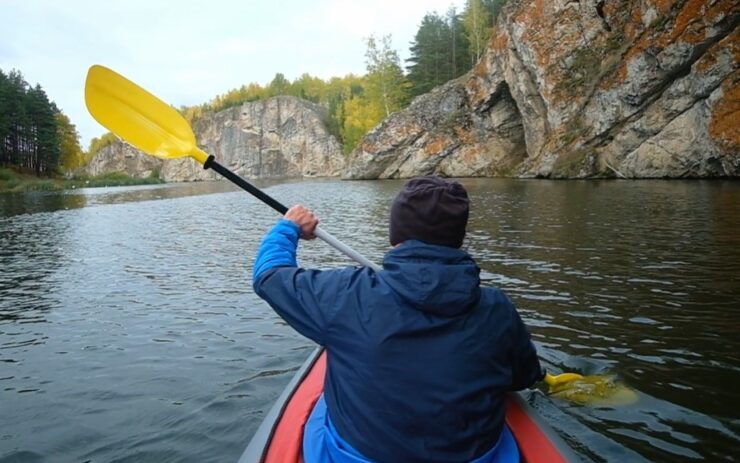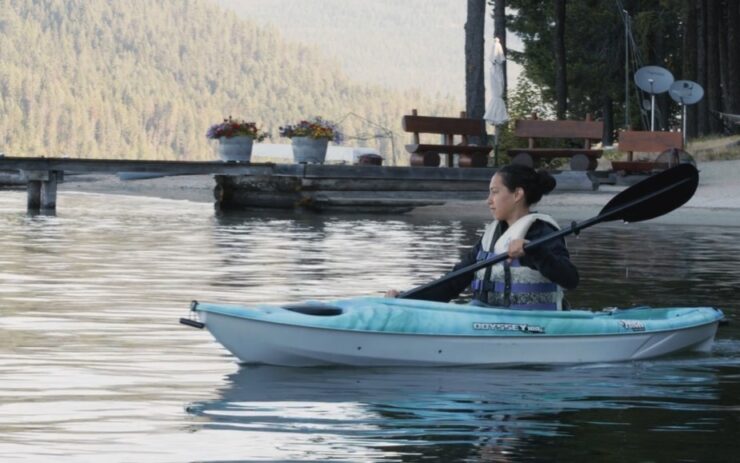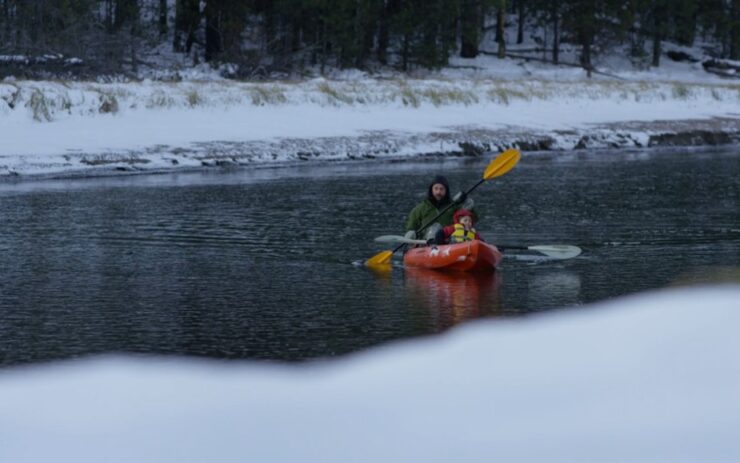Kayaking is a fun and adventurous sport. When the weather turns cold, it becomes difficult to kayak in ice-cold water. Luckily, there are many ways to stay warm while on the water. Some of these methods include wearing layers that can be removed or added as needed, using sunblock on exposed skin areas that are more prone to frostbite, and drinking plenty of fluids before going out on the water.
Kayaking in cold weather is an exciting and invigorating way to enjoy the outdoors. It is important to take precautions before you head out on the water, however, because the cold temperature can affect your body’s ability to stay warm.
Drysuits and wet suits are also are a must if you are going into real cold weather. Let’s do a quick overview:
Table of Contents
ToggleWet Suits

Wet or skin suits are made so that they form a barrier between your skin and the outside world. They insulate extremely well because they retain water which helps to keep your body heat up. The downside of wet suits is that if you have any holes in them, like after scratching yourself on a sharp rock, the water will come in and you’ll get cold very fast.
Dry Suits

Dry Suits work by trapping an insulating layer of air between you and your clothes. They are made to form a second waterproof layer on top of whatever you’re wearing underneath them so they are considerably thicker than wet suits (8-12 millimeters).
Drysuits also require proper maintenance to stay functional since water seeping through the zipper or any small holes may cause you to lose body heat.
As far as insulating layers go, extra clothes can be worn over a dry suit, and during breaks in the activity, you can remove clothing and store it inside your kayak or put on the warmer gear.
A drawback of dry suits is that they make getting dressed and undressed more complicated than wet suits: most dry suits require zippers rather than quick-release buckles for example, which makes them incompatible with most inflatable kayaks.
How to Dress for Cold-Water Paddling – More Tips
First of all, it’s important to dress for warmth – even if it seems sunny outside! Your body will lose heat quickly through exposure to sun or wind, resulting in hypothermia that can be deadly. Dress in layers so that you can add or remove clothes as needed without spending too much time packing extra clothing.
Be sure your outer layer is waterproof so that you don’t get wet from rain or river waves splashing against your kayak. It’s also helpful to wear a hat and gloves since the majority of heat lost from your body is through your head and extremities. Finally, wear comfortable footwear that can stay on in wet conditions.
If you plan to be out for several hours or more, pack extra layers with you so that you can put them on if you begin to feel cold. Staying dry is one of the best ways to protect yourself against hypothermia, so take short rest breaks often to change into warm clothing if needed. Also, bring along a backpack containing water and snacks for energy as well as first aid supplies in case someone gets injured while kayaking.
Finally, write down a checklist of things to remember before going kayaking – this list should include items as life preservers and a means of communication.
Since cold weather affects the reaction time and control of your movements, it is important to take extra time getting in and out of your kayak, as well as to maneuver carefully while on the water.
If you need to pull yourself up a riverbank or climb back into your kayak, be sure you have something sturdy to hold onto and that you take care not to slip and fall into the water! It can also be helpful for at least one person in each boat to wear a personal flotation device (PFD). Attach their kayak with your paddle so you don’t get separated, and then both of you should return to safety.
Let’s do a quick review then of the things that are most important:

1. Dress in layers so you can take them off if they get too hot
2. Wear a hat and gloves to keep your head and hands warm
3. Bring an emergency kit with snacks, water, extra clothes, a first aid kit, etc.
4. Use a spray skirt on the kayak to keep out water that will make it cold inside the boat
5. Make sure your kayak has enough room for all of your gear or bring two boats
6. Keep moving – don’t stay still in one place for long periods of time without paddling around
7. Keep checking on yourself and others to make sure everyone is staying safe and warm
8. Don’t drink alcohol – it will make you lose body heat faster
9. Your reaction time and control will be slower, so take longer to plan your moves ahead of time
10. Watch for signs that someone else might be getting too cold or isn’t coping as well as you are with the temperature
11. If someone else seems to be in trouble, approach slowly from behind them so they don’t mistake your intentions if they have the early symptoms of hypothermia
12. Keep a lookout for wildlife so you don’t run into them or scare them off
13. Try to be back before the sun sets – it can get pretty dangerous on the water when its dark out, and most people aren’t prepared for that kind of situation
14. Wear your PFD! You should already carry one in your kayak anyways, but don’t forget to put it on every time you get in your boat (this is important even if you’re just in calm waters)
That’s all for now, so I hope this helped some of you who are interested in how to stay safe while kayaking through cold weather conditions.
Find out what are the main differences between drysuits and wetsuits by watching the following video:
Adelaide Gentry, a seasoned kayaking enthusiast and expert, is the driving force behind KayakPaddling.net. With over a decade of experience navigating the world’s most challenging waterways, Adelaide combines her passion for adventure with a deep knowledge of kayaking to provide insightful and practical guidance for paddlers of all levels.
Related Posts:
- 16 Best Kayak For Beginners 2024 - Kayaking Adventure Gear
- Heavy Duty Fishing: 11 Best Rods And Reels For Big Fish 2024
- 12 Best Water Socks in 2024 - Swim and Dive Tested
- 17 Best Trolling Reels 2024 - Enjoy your Fishing Adventure
- 15 Best Baitcasting Reel Under $100 2024 - Improve…
- Best Kayak Dog Platforms, Seats, Deck, Attachments,…












